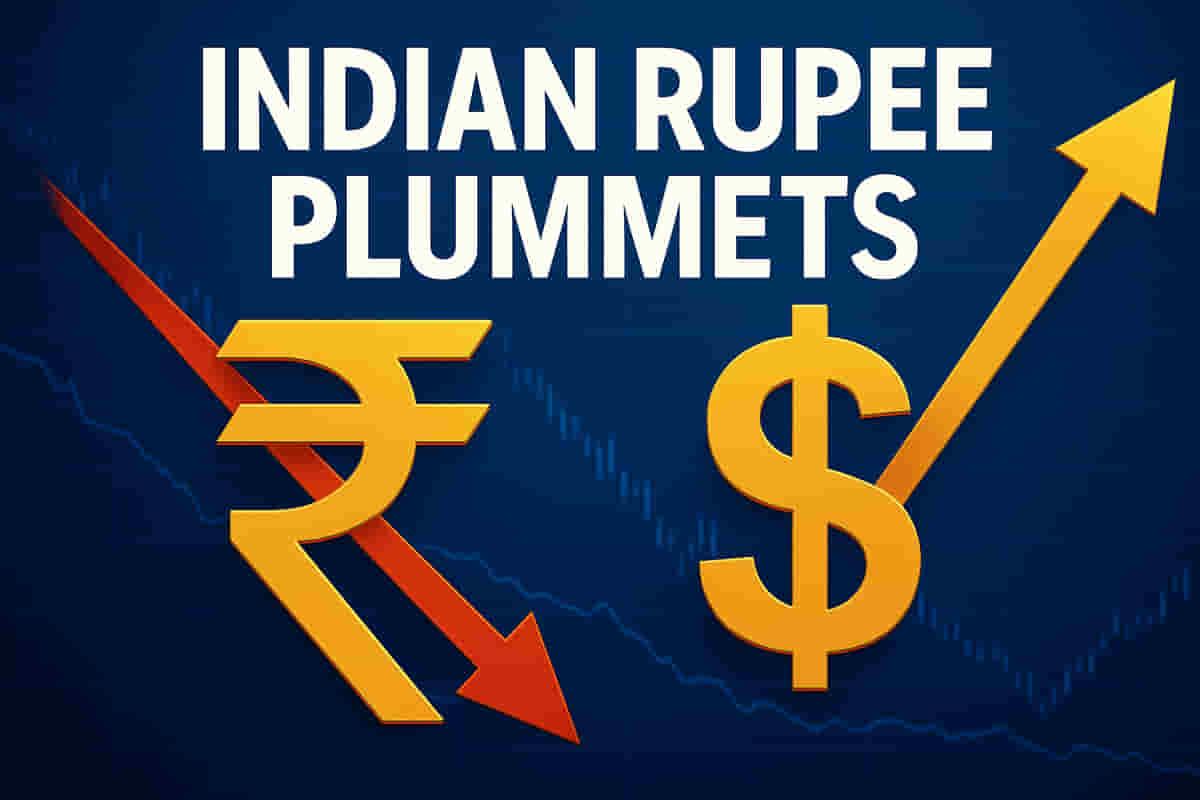Indian Rupee Opens Weaker Against US Dollar Amid Rising US Yields and Fed Uncertainty
Economy
|
30th October 2025, 4:19 AM

▶
Short Description :
Detailed Coverage :
The Indian rupee commenced trading on Thursday at a weaker position against the US dollar, depreciating by 20 paise to reach 88.41 from its previous close of 88.20. This movement aligns with broader weakness observed in other Asian currencies, as the US dollar strengthened and US Treasury yields climbed. Federal Reserve Chair Jerome Powell's recent statements indicated that a December interest rate cut is "not a foregone conclusion," leading investors to scale back their expectations for early monetary policy easing. Consequently, the probability of a December rate cut decreased significantly, and the dollar index saw a notable rise.
Market participants reported that the rupee faced renewed pressure due to firm US yields and consistent demand for dollars from importers. However, support was visible from the Reserve Bank of India (RBI) through state-run banks, which intervened around the 88.40–88.50 levels to stabilize the currency and prevent excessive depreciation.
Despite Powell's cautious outlook, some analysts maintain their forecasts for a December rate cut, citing factors such as a softening inflation outlook and concerns regarding the labor market. The rupee remains susceptible to global financial cues and external economic pressures, although the RBI's interventions have been instrumental in managing currency volatility in recent trading sessions.
Impact This depreciation of the rupee can lead to increased costs for Indian importers and higher inflation. Conversely, it can make Indian exports more competitive internationally. Companies with significant foreign currency denominated debt may face higher repayment burdens. Overall, it can influence investor sentiment and contribute to market volatility.
Impact Rating: 7/10
Difficult Terms Explained: Basis Points: A basis point is one-hundredth of a percentage point (0.01%). For example, a rise of 10 basis points means an increase of 0.10%. US Treasury Yields: These are the interest rates paid on debt issued by the U.S. Department of the Treasury. Higher yields make dollar-denominated assets more attractive to investors. Federal Reserve Chair Jerome Powell: The head of the U.S. central bank, responsible for setting monetary policy. His statements significantly influence global financial markets. Dollar Index: A measure of the value of the US dollar against a basket of six major world currencies. A higher index indicates a stronger dollar. Hawkish Tone: Refers to signals from a central bank suggesting a preference for tighter monetary policy, usually to combat inflation, often implying higher interest rates. Policy Easing: Refers to a central bank's actions to lower interest rates or increase the money supply to stimulate economic activity. State-run banks: Banks owned and controlled by the government, often utilized by the central bank for market operations such as currency interventions.